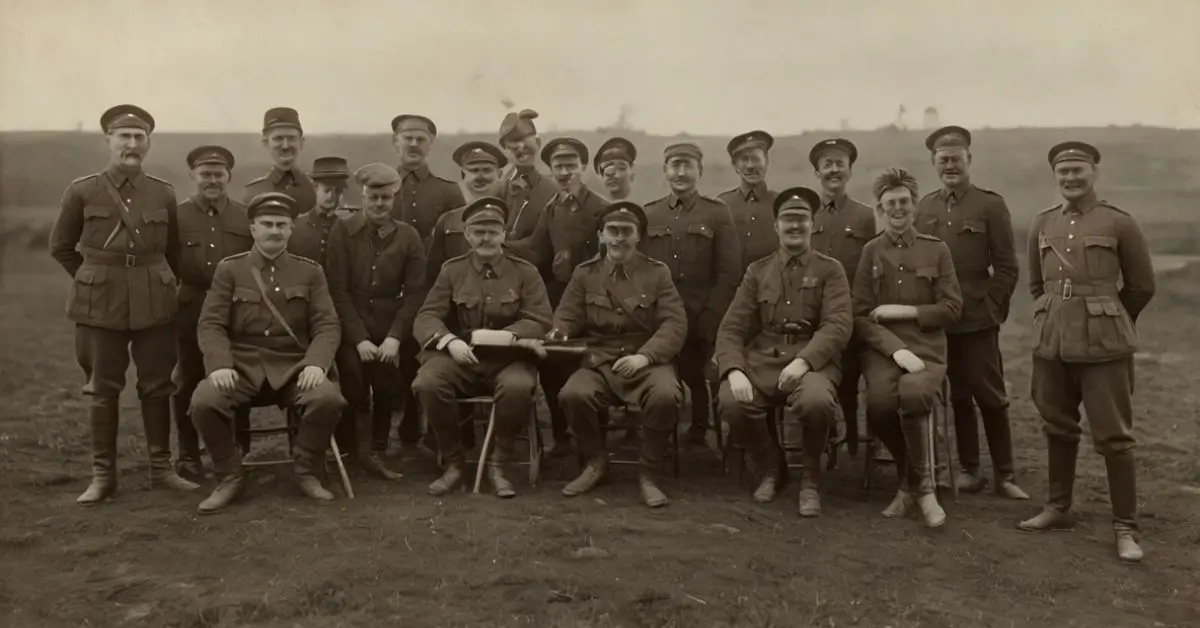After the devastation of World War I, the world was forever changed. The war left not only physical scars but also emotional, psychological, and cultural impacts. Amidst the rebuilding of nations and societies, entertainment took on a new form. People sought a reprieve from the trauma of war, and the entertainment industry responded in kind, offering new and innovative ways for people to escape, heal, and find joy. But what was entertainment after WW1?
In this article, we will explore the transformation of entertainment following World War I, examining the rise of cinema, music, theater, and the cultural shifts that defined this post-war period.
Profile Summary
| Aspect | Details |
|---|---|
| Era | Post-World War I |
| Cultural Shift | From wartime trauma to new forms of entertainment |
| Key Developments | Rise of Cinema, Jazz, and Theater |
| Key Technologies | Silent Films, Radio, and Early Sound Films |
| Prominent Artists | Charlie Chaplin, Louis Armstrong, F. Scott Fitzgerald |
| Economic Influence | Growth of entertainment industry post-WW1 |
| Social Impact | Mass entertainment as a form of healing |
What Was Entertainment After WW1: Shifting Preferences and New Forms
The aftermath of World War I saw a society that was eager for change and entertainment. The devastation of the war, which lasted from 1914 to 1918, left its mark on people’s psyches. Yet, it also led to new artistic expressions. People were no longer interested in the somber and often bleak forms of entertainment of the pre-war era. Entertainment began to shift away from traditional forms and focused on escapism and recovery. The most significant cultural changes can be broken down into several key categories, including cinema, music, theater, and the growth of new technologies like radio.
Cinema: A New Era of Escapism
The 1920s, known as the “Roaring Twenties,” marked a significant period in the evolution of cinema. Silent films began to dominate the entertainment scene, providing audiences with the perfect escape from their harsh realities. Iconic figures like Charlie Chaplin, Buster Keaton, and Greta Garbo became household names, offering comic relief and stories that connected with a war-weary audience.
One of the most significant changes in cinema during this time was the rise of feature-length films, as opposed to short films. Audiences were drawn to films for their ability to transport them into a different world, far removed from the struggles of post-war life. Themes of romance, adventure, and comedy were particularly popular as they provided much-needed relief from the harshness of reality.
In 1927, the release of The Jazz Singer marked the end of the silent film era and the beginning of sound films. This new innovation brought a fresh wave of excitement to the movie industry. Audiences were captivated not only by the visuals but also by the accompanying sound, which added depth to the storytelling. Cinema became one of the primary forms of entertainment after WW1, offering a new avenue for creativity and escapism.
Jazz and Music: The Soundtrack of the Roaring Twenties
The rise of jazz music in the post-WWI era was another key element in the entertainment landscape. Jazz, which had originated in the African-American communities of New Orleans, gained widespread popularity during the 1920s. Its upbeat, improvisational style resonated with people looking for something lively and new after the somber years of the war. The music provided an outlet for creativity and expression, allowing people to forget their troubles and celebrate life.
Prominent figures like Louis Armstrong and Duke Ellington became cultural icons during this period, performing across the country and making jazz music a mainstream sensation. Dance halls and nightclubs became the centers of social life, where people could listen to live jazz and dance away their worries. The dance craze that accompanied jazz, including the Charleston and the Black Bottom, became incredibly popular and was embraced by people of all social classes.
Jazz also influenced other musical genres during this time, contributing to the development of swing music, blues, and later rock ‘n’ roll. The role of music in the post-WWI period was integral to the healing process, helping to lift spirits and create a sense of unity in a world that had just endured such devastating loss.
Theater: From Drama to Comedy and New Narratives
The theater also played a significant role in post-WWI entertainment. With the world having endured the horrors of war, audiences were ready for entertainment that offered both emotional depth and moments of levity. The theater became a space for reflection, exploration, and escapism.
Broadway in New York City, for example, became the heart of a new era of American theater. Musicals, plays, and revues became popular forms of entertainment. The roaring success of musicals like Show Boat (1927) brought both light-hearted entertainment and socially relevant issues to the stage. Plays began to explore deeper themes such as social justice, class struggles, and the human condition, all in a post-war context. At the same time, comedy and light-hearted farces provided much-needed relief from the grief and sadness of the previous years.
Theaters became not only a place for watching live performances but also for connecting with the broader cultural trends of the time. With the rise of movie stars and Broadway icons, entertainment became more centered around celebrity culture, which would continue to grow in prominence in the decades that followed.
The Rise of Radio: A New Way to Connect and Entertain
While cinema, music, and theater provided entertainment in the 1920s, radio emerged as one of the most significant technological advancements in entertainment following WW1. The radio made it possible for people to experience live performances, news, and music directly from their homes, and it quickly became an essential part of daily life.
In the early years of radio, programming was sparse, but as the decade progressed, radio stations began broadcasting a wide range of content, including music, dramas, news programs, and sporting events. The accessibility of radio made it an incredibly popular form of entertainment, particularly for families who had previously relied on other forms of entertainment such as books or live theater.
Radio also brought the world closer together, as people could now tune in to hear events and happenings from around the globe. This sense of connectedness was particularly important in the wake of the war, as people were eager to feel part of a broader community once again.
New Social Realities and the Changing Entertainment Landscape
Entertainment after WW1 also reflected the shifting social and cultural landscape. The war had brought about significant changes in gender roles, with women entering the workforce in greater numbers than ever before. This shift was reflected in entertainment, with women becoming prominent figures in cinema, music, and theater. Stars like Clara Bow, the “It Girl,” became symbols of the changing times and offered new possibilities for women in the entertainment industry.
The post-WWI period also saw the rise of mass entertainment. With the growth of the entertainment industry and the increasing accessibility of cinema, radio, and music, entertainment became a more democratic experience. More people, regardless of their social or economic status, could access entertainment and become part of the cultural conversation.
Conclusion:
Entertainment after WW1 played a significant role in helping society recover from the war’s trauma. Cinema, music, theater, and radio all contributed to the cultural shift of the post-war era. People sought relief and escape, and entertainment industries provided that, offering a combination of humor, drama, and escapism.
The forms of entertainment that rose in popularity during this time set the stage for many of the cultural trends that would dominate in the decades that followed. The new technology of radio and the invention of sound in films made entertainment more accessible than ever, while the emergence of jazz and Broadway musicals brought joy and excitement to millions. In essence, the entertainment that blossomed after WW1 not only provided a means of healing but also contributed to the evolution of global cultural norms.
FAQs
- What types of entertainment became popular after WW1?
After WW1, cinema, jazz music, live theater, and radio became major forms of entertainment, helping people cope with the effects of the war and providing an escape from everyday struggles. - How did cinema change after WW1?
Cinema evolved significantly post-WWI, moving from silent films to sound films with the release of The Jazz Singer in 1927. This brought a new level of immersion and excitement to movie-going. - Why was jazz so important after WW1?
Jazz became the soundtrack of the Roaring Twenties, offering a lively, energetic escape that resonated with people recovering from the trauma of the war. Its upbeat, improvisational style helped lift spirits. - What role did theater play in post-WWI entertainment?
Theater became a space for emotional exploration, with plays and musicals that addressed both serious social issues and light-hearted escapism, reflecting the changes in society after the war. - How did radio change entertainment after WW1?
Radio revolutionized entertainment by bringing live performances, music, news, and dramas directly into people’s homes, making it one of the most influential entertainment mediums of the time. - What social changes influenced entertainment after WW1?
The post-WWI period saw shifts in gender roles, with women gaining prominence in entertainment, and a move towards more mass entertainment, making these cultural products accessible to a broader audience.












